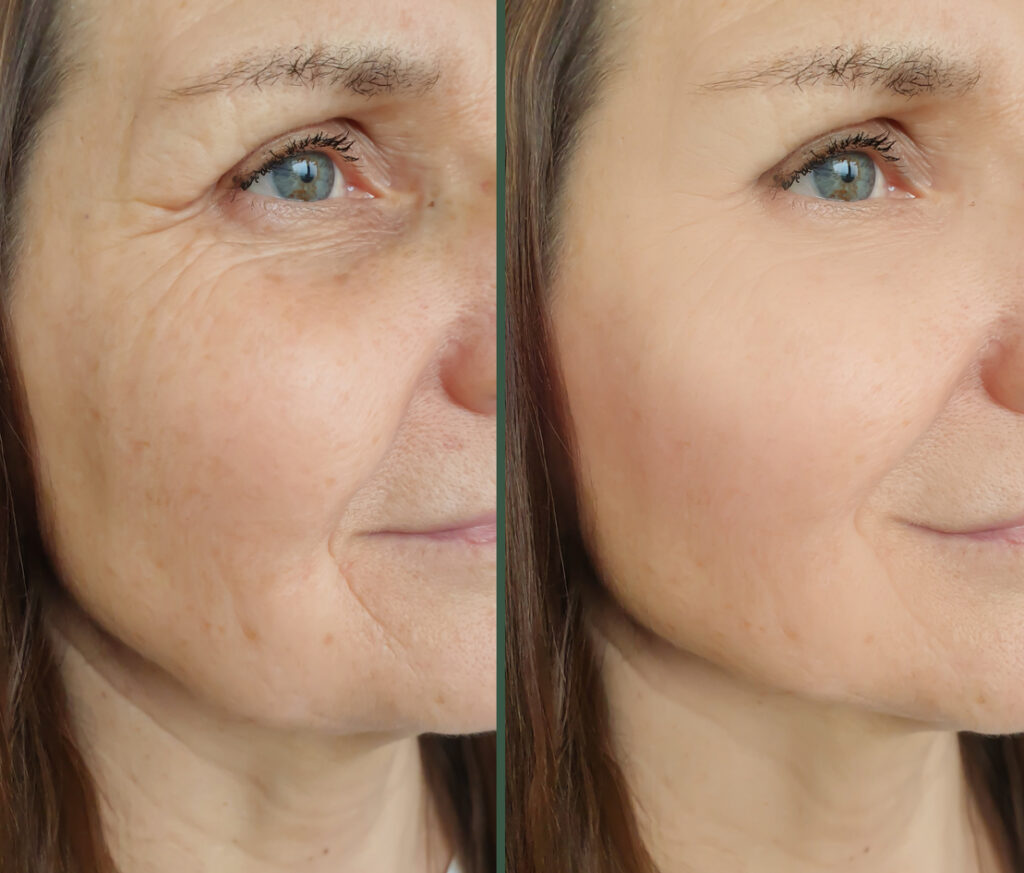Injections of the hyaluronic acid (HA) fillers Restylane Lyft or Contour in combination with Sculptra (poly-L-lactic acid) may help correct “Ozempic face,” new Phase IV data suggests.
“Ozempic face” is the colloquial term for the effects of massive weight loss from glucagon-like peptide-1 receptor agonists (GLP-1RAs) on the face, namely sagging and aging skin.
“As medication-driven weight loss becomes more prolific around the world, so do the associated impacts of facial volume loss and other unwanted cosmetic effects like shadowing and hollowness,” says study author and Washington, DC-based Facial Plastic Surgeon Michael Somenek, MD. “This innovative study is going to be invaluable in exploring how best to address these facial alterations, with results so far being very promising.”
In a Phase IV clinical trial conducted in the U.S., researchers investigated the efficacy, safety, and patient satisfaction of Galderma’s Restylane Lyft or Contour in combination with Sculptra for cheek augmentation and correction of contour deficiencies in patients with medication-driven weight loss with associated facial volume loss.
The trial took place across two sites and used the SHAPE Up Holistic Individualized Treatment (HIT) as a treatment methodology. HIT is an individualized treatment approach that enables injectors to leverage their expertise with the Galderma Restylane portfolio to optimize aesthetic outcomes while prioritizing patient satisfaction.
Patients were treated with Sculptra and either Restylane Lyft or Contour for their first treatment, a second treatment of Sculptra with an optional touch-up of Restylane Lyft or Contour at Week 4, and an optional third treatment of Sculptra at Week 8. Follow-up visits occurred at Week 20 for those who received the third Sculptra treatment and at Week 16 for those who did not, corresponding to three months after their final treatment.
At three months, the combination of Sculptra and Restylane Lyft or Contour effectively improved the facial aesthetic appearance of patients experiencing significant medication-driven weight loss with associated facial volume loss, the study showed. Three months after their final treatment, subjects showed improved mid-face shape and contouring along with improvements in cheek wrinkles and an overall improvement in facial appearance.
Skin quality findings, which were assessed and reported in the Sculptra/Restylane Lyft regimen, demonstrated benefits beyond visual improvement; with Sculptra significantly improving skin radiance and skin thickness three months after final injection treatment.
Additionally, results showed Restylane Lyft significantly improved skin hydration as early as Week 4, which was maintained at the three-month follow-up visit. Subjects reported high satisfaction as early as four weeks after their first treatment session, which was maintained through to three months after their treatment.
In Week 4, 85% said their face looked more refreshed, and almost 80% noticed their facial balance was improved and said the SHAPE UP HIT enhanced their face’s structural harmony. In addition, 89% felt more attractive and happier with their appearance and agreed it provided natural-looking results at three months post follow-up.
Safety was in line with previous pivotal trial data for all products, with no treatment-related adverse events reports.
A six-month extension is now ongoing to confirm the long-term effects, a full nine months after final Sculptra treatment, to further confirm the benefits of the combination approach.
The new interim data is slated to be presented at the 43rd Annual J.P. Morgan Healthcare Conference in San Francisco, CA.


